AI Recruiting: A Definitive Guide for Small to Midsize Businesses
There's a misconception that only large corporations have the budget and need for AI-driven recruiting tools—here's why that's not true:
This kind of tech is affordable and accessible for small and midsize organizations.
SMBs may benefit from automating the recruiting process more than enterprises because they typically have smaller HR teams who handle more responsibilities.
You're here because you're aware of the buzz around AI recruiting, but you're not sure what AI can specifically help your recruiting team accomplish. Use our overview of AI recruiting technology and examples of how it’s transforming modern recruitment (based on research from Gartner) to educate your team on this emerging tech.
Jump to: AI in HR: 4 Use Cases for SMBs
What is AI recruiting?
AI recruiting is the application of artificial intelligence capabilities in the talent acquisition process. Artificial intelligence exists in many forms today including machine learning, natural language processing, generative AI, and robotic process automation.
When used strategically, AI can help recruiters make better, faster hiring decisions. And today, the majority of organizations are already embracing AI recruiting on some level [1]:
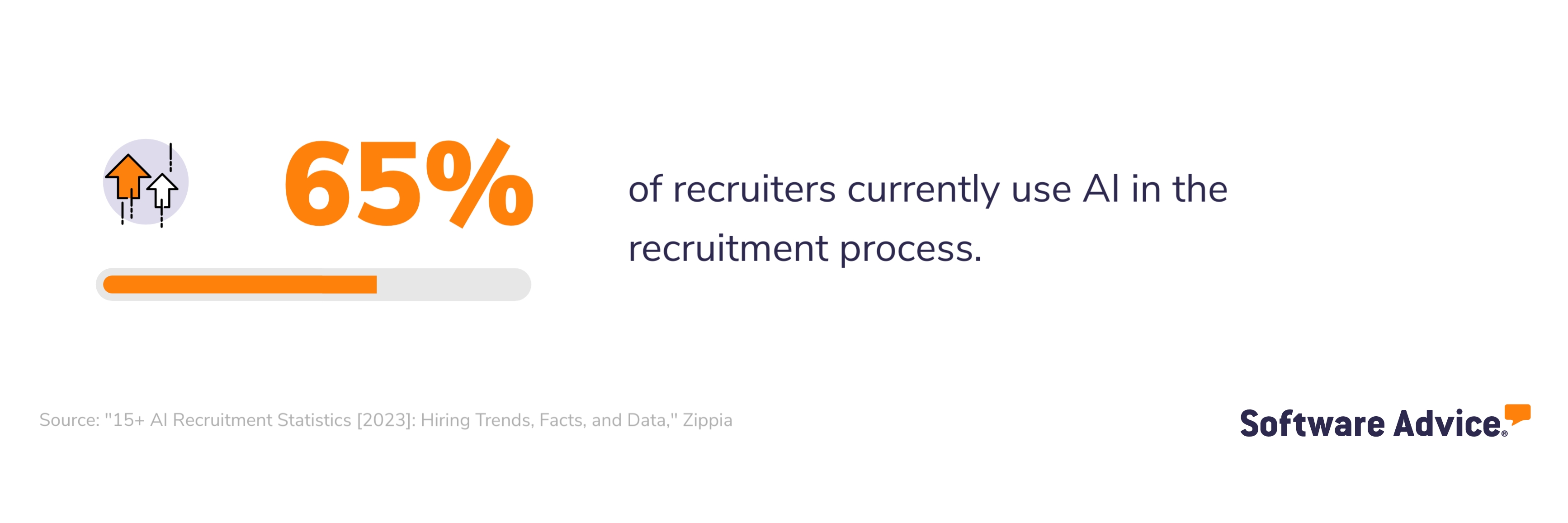
Examples of AI recruiting in action
1. Automated candidate sourcing
Finding and engaging with qualified candidates has long been a core responsibility for recruiters, but today AI is changing the way businesses source job applicants. While historically recruiters have had to comb through employee referrals or resumes on job sites to find qualified talent, AI-enabled sourcing technology uses skill-matching algorithms and data analysis to automate the candidate sourcing process.
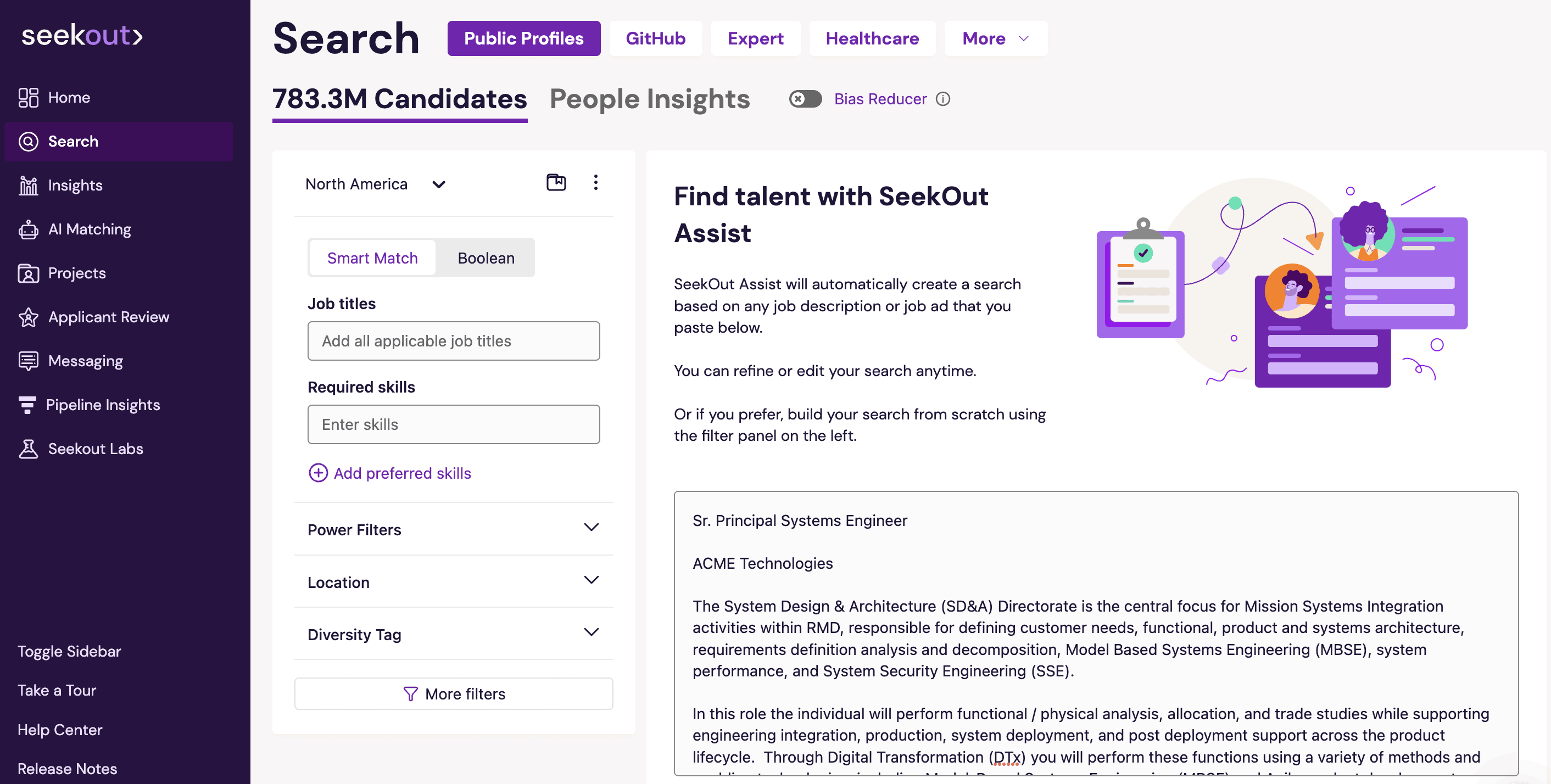
In a survey conducted by Gartner, recruiting leaders were asked where in the recruitment process AI is currently used, and automated candidate sourcing and sourcing tools were the top two answers. [3]
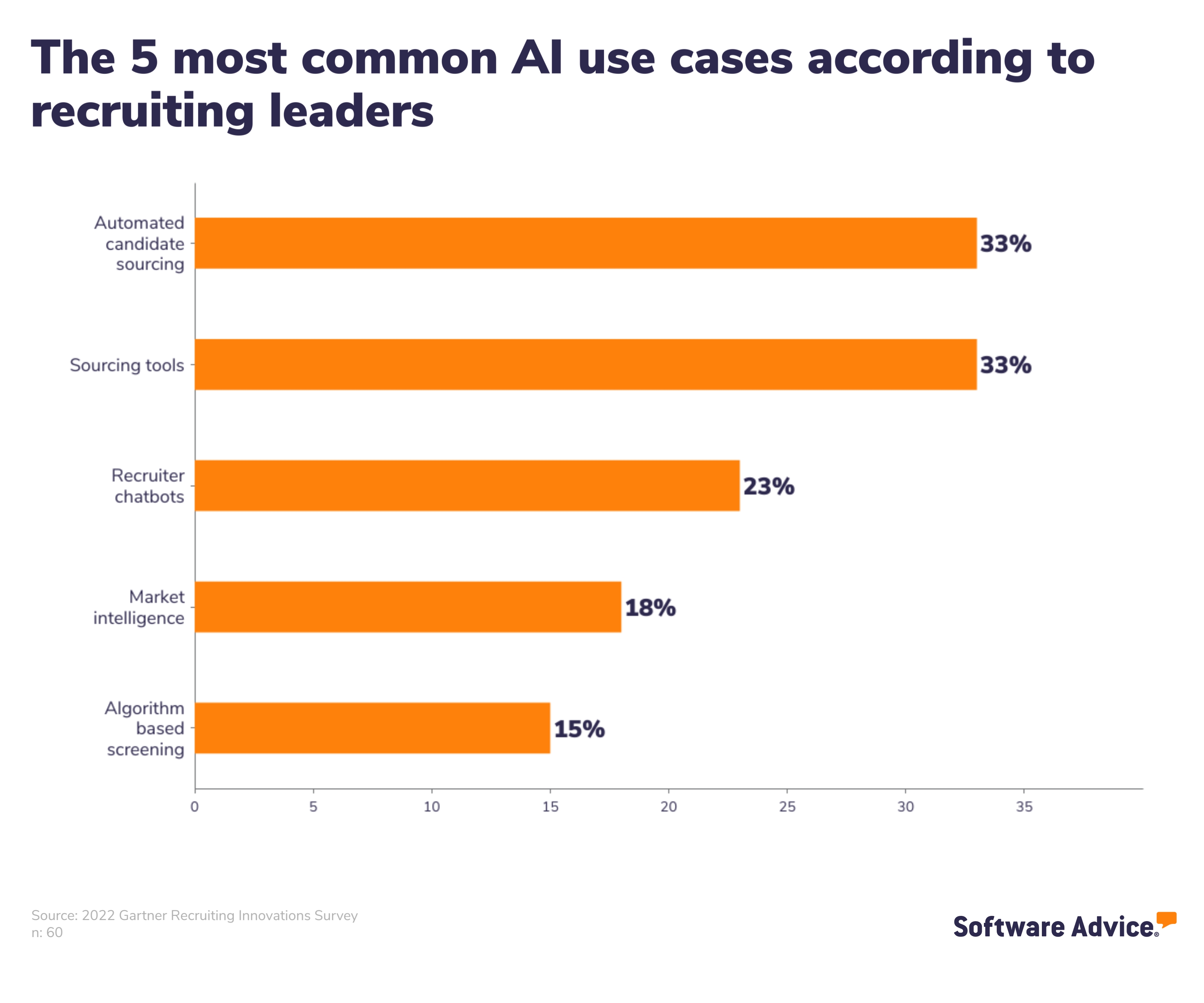
When to invest in automated candidate sourcing
If most of your recruiters' time is spent on sourcing candidates, it makes sense to automate and shift your team members' focus to connecting and interacting with selected candidates.
As a next step, consider investing in recruiting software that offers automated sourcing capabilities. Or, if you already have a recruiting platform, ask your vendor whether their solution offers this capability.
2. AI-powered resume screening
AI-powered resume screening works through parsing data in documents—scanning and retrieving relevant information such as the applicant's skills, prior work experience, and certifications.
Some sources claim that screening resumes can take up to 23 hours for just one hire—more than half of a recruiter's work week. [4] Thankfully, AI-powered screening can significantly cut back on the time required for this task.
Currently, several kinds of AI-powered screening tools exist, and each one is designed so that hiring managers can set custom criteria to search for to make sure qualification indicators are primed to find the right candidate.
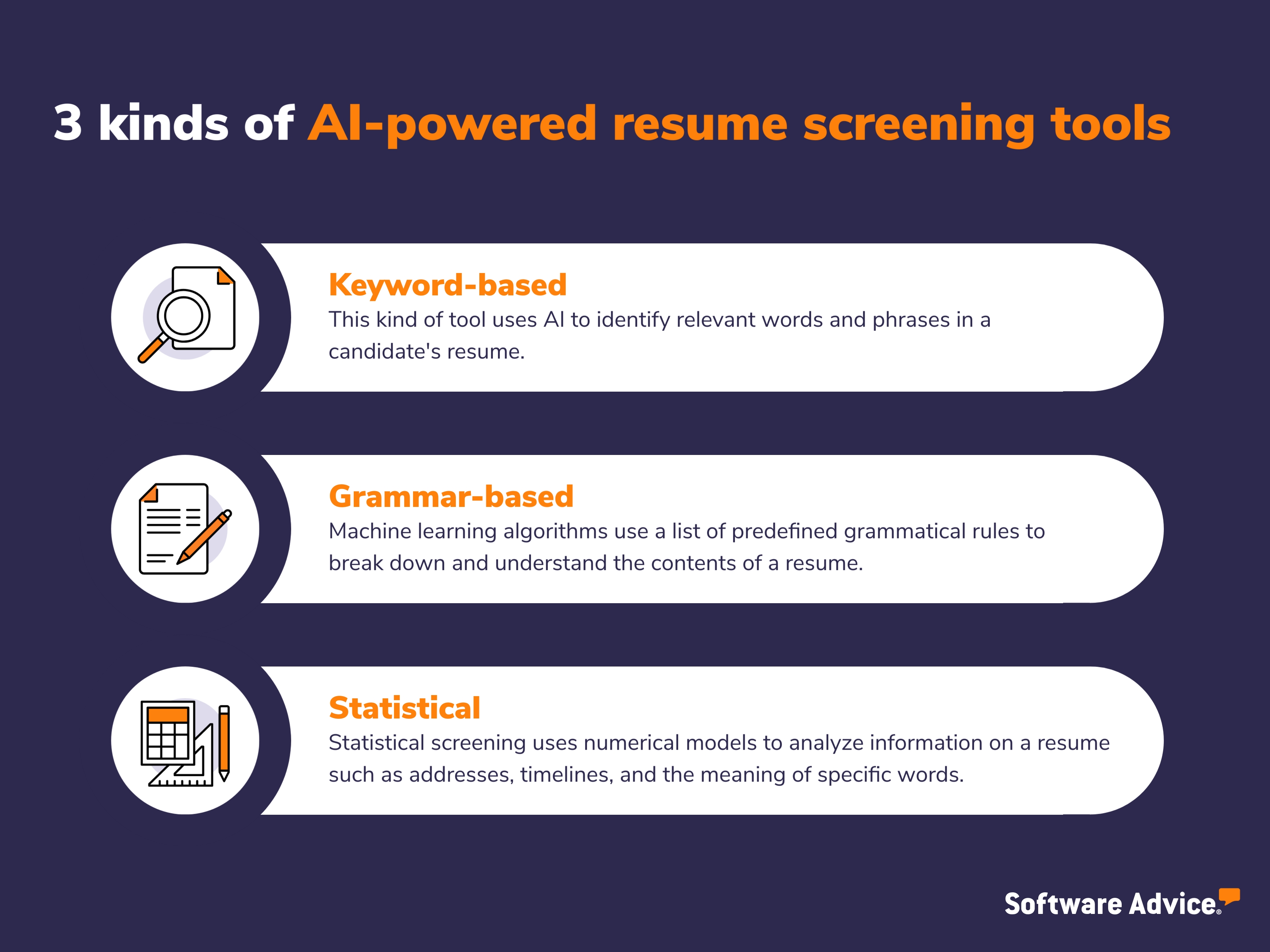
When to invest in AI-powered resume screening
There are two key indicators to look for when it comes to deciding whether or not to embrace AI-powered resume screening: time-to-fill and new hire turnover rates.
On the topic of recruitment metrics: Yield Ratio: Definition, Calculation, and Best Practices
Recruiters are often pressured to fill roles fast while finding the best fit. But if new hires are quickly leaving the organization due to a mismatch between their experience and the demands of the role they were hired for, or if it's taking months to make a hire, it’s time to offload some of the challenges of screening applicants to AI.
If this is the case for your team, check out our applicant tracking system (ATS) software directory. There, you can find tools with AI-powered screening capabilities like the one in the screenshot below.
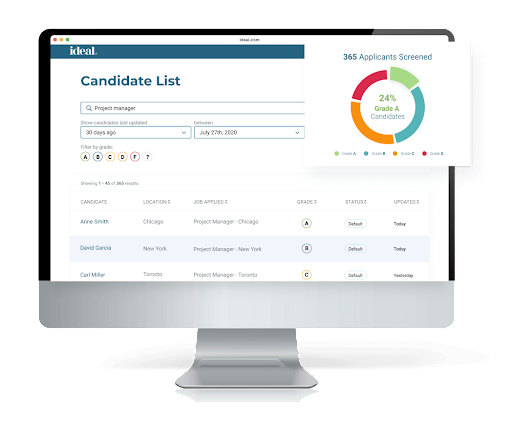
3. Automated interview scheduling
Automated interview scheduling is a common application of AI in the recruitment process that can save hiring managers, recruiters, and applicants' time. With automated interview scheduling, candidates are able to choose from a hiring team's available time slots, minimizing the need for back-and-forth communication between recruiters and applicants.
Calendar sharing used to be the standard when it came to scheduling interviews; a recruiter would share their availability with a candidate, who would then pick a time to be interviewed. However, if none of the open time slots worked with the candidate's schedule, they'd either message back-and-forth with the recruiter, or worse, fade out of the process [3]:
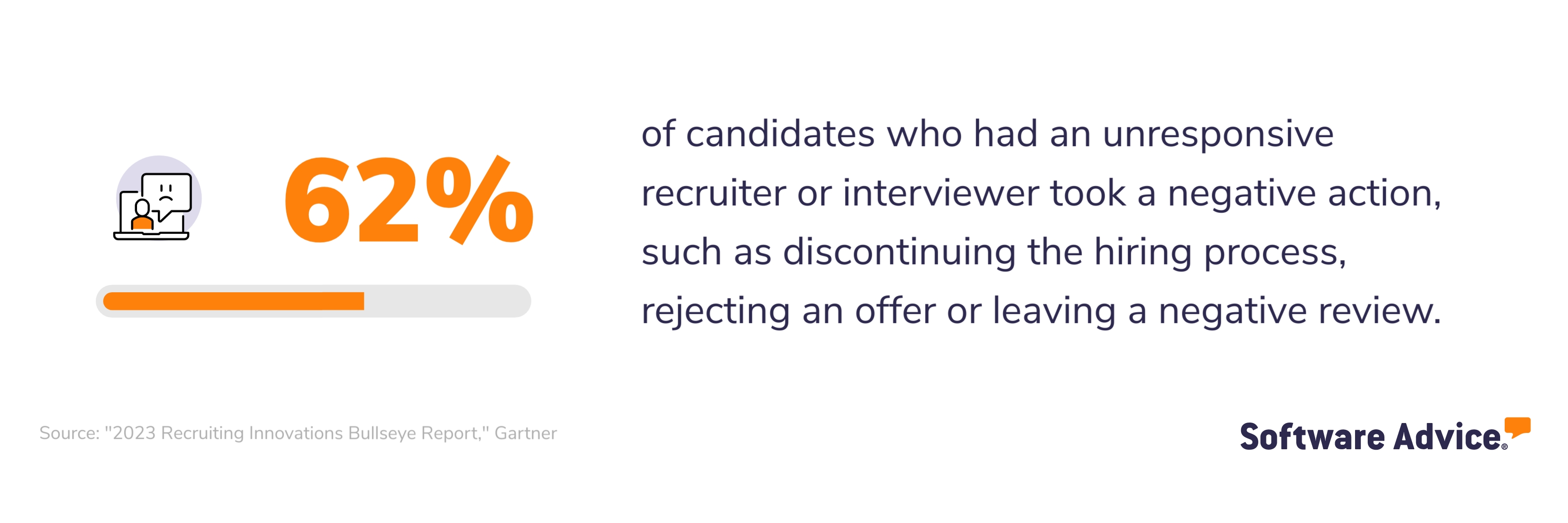
When to invest in AI-powered resume screening
Most ATS and recruiting platforms offer automated interview scheduling, so there's really no reason not to embrace this technology. And whether you only have one in-house recruiter or you have a whole team dedicated to talent acquisition, you can reduce time-to-hire by allowing candidates to self-schedule their interviews.
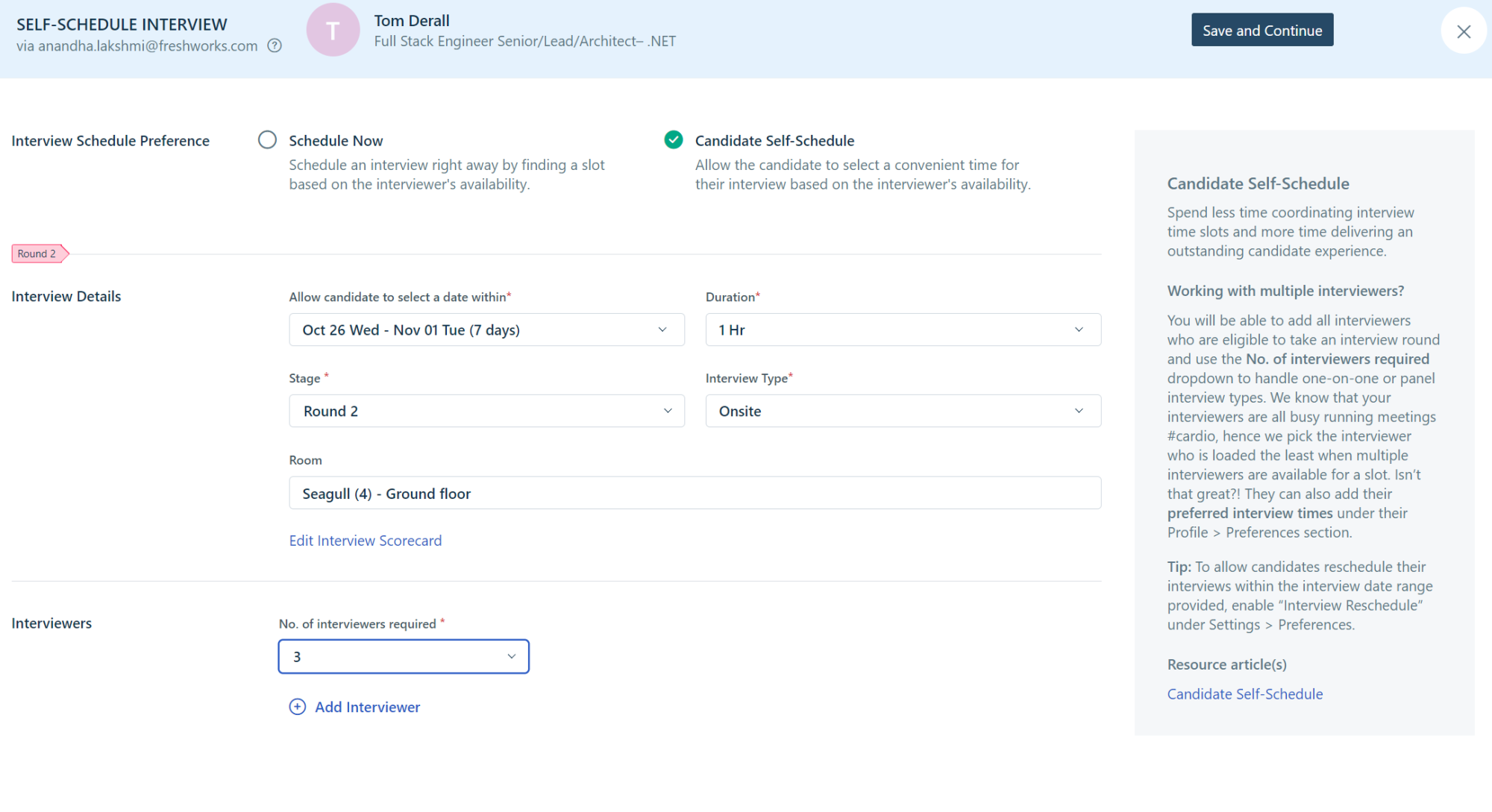
The backend of automated interview scheduling shown here in Freshworks [5]
You might be interested in: What To Ask In A Candidate Experience Survey
4. AI-enabled bias mitigation
In 2022, recruiting leaders identified bias mitigation—tools that use AI or algorithms to identify or limit bias in the recruiting process—as having the No. 1 greatest future importance on their recruiting outcomes over the next two years. [3]
This isn't surprising considering that Gartner found that nearly half (48%) of candidates say they have experienced at least one form of bias in their application process. [6] Taking active steps to reduce and eliminate bias in the recruiting process is a must for organizations who want to build a diverse and inclusive workplace.
Check out our related content: A Guide to DEI Training for Small Businesses
Today, AI-enabled bias mitigation is built into recruiting software in the form of a few different features:
Job description language review: Using exclusive words or phrases in your job descriptions can prevent underrepresented talent from entering the application process. For example, gender-coded words like “salesman,” “aggressive,” or even “competitive” can deter women from applying. However, with the help of machine learning, recruiting tools are reviewing their job descriptions and adverts and removing such terms. [7]

Applied’s job description analysis tool identifies exclusive words (Source)
Blind hiring mode: Affinity bias occurs when an individual shows preference toward someone who they relate to or share things in common with. Recruiters are not immune to experiencing affinity bias, so redacting personal information from a candidate’s resume (such as their name, gender, education history, or age) can help your hiring team make decisions based on what really matters: skills and work experience.
Skills matching algorithms: Speaking of skills, another AI feature that reduces bias through minimizing the need for recruiters to manually review resumes is skills matching. Skills matching works via natural language processing; in a sentence, using AI to analyze candidates’ resumes and professional profiles in order to determine whether their experience aligns with the skillset a hiring team is looking for.
When to invest in AI bias mitigation tools
In order to determine whether bias mitigation is something your business needs, consider the following questions:
What is your current workforce's demographic makeup? If it's relatively homogenous, it's time to actively embrace bias mitigation.
Have there been any complaints of bias from candidates? If so, you need bias mitigation (and probably bias awareness training, too).
If you aren't collecting feedback from new hires about the candidate experience, we suggest visiting our content: What To Ask In A Candidate Experience Survey.
What is new hire turnover like? Similar to our point in the section on AI-powered resume screening tools, if new hires are quickly leaving or being let go due to a mismatch in the skills they have and the skills the role they were hired for requires, a skills matching algorithm can help.
Challenges of AI recruiting to be aware of
Though AI can be a powerful tool when applied to the talent acquisition process, there are several challenges that have to be addressed by those who wield it in order to use it effectively and ethically.
Data maintenance: AI models require vast amounts of data to train them. If you don't have a data storage strategy—or, if your data is not clean—AI may not be of use to you. Further, even if you do have the proper data to train an AI model, regular assessments are required to ensure that errors or inaccuracies are avoided. In The Society for Human Resources Management’s Automation and AI in HR Survey, 54% of respondents who use automation or AI to support HR activities said they've faced challenges when using the tools, including not having the resources to properly audit or correct AI algorithms and the algorithms inadvertently overlooking or excluding qualified applicants or employees. [8]
AI biases: As much as AI can be used to mitigate biases, it also has the potential to exacerbate them. Humans choose the datasets that algorithms use and are trained off of, and because of that, it's easy for unconscious biases to enter machine learning models. For example, if you build a candidate persona based on a real employee, the model may put too much emphasis on personal characteristics such as the gender, age, or even education level of the employee.
AI recruiting is on the rise—how will your organization use it?
In 2022, 58% of recruiting leaders planned to increase their total spending on recruiting technology in the next 12 months. [3] This increase can be attributed to recruiting leaders' motivations to:
Improve the candidate experience (78%)
Accelerate recruiting staff capabilities (55%)
Further automate repetitive or manual tasks (50%)
The four examples covered in this content prove that AI recruiting technology can help you achieve all of the above. However, as we covered in the previous section, there are considerations that can't be ignored when determining whether or not now is the time to adopt AI.
With that in mind, your next step should be to consider how you could incorporate AI and automation capabilities into your existing talent acquisition processes to drive efficiency and enhance the candidate experience.
And if you're not sure where to start, here's what to do next:
Next steps
Determine existing digital maturity level: If your team is mostly managing the recruitment process without the help of digital tools, you don't need to jump straight to AI recruitment—instead, consider adopting an all-in-one recruiting platform.
Look for areas to automate: If you do have recruitment software and are putting it to good use, identify manual processes that could be automated. Look for bottlenecks or time-consuming tasks such as resume screening, candidate sourcing, and interview scheduling.
Keep up with your competition with tech: AI is becoming more standard in talent acquisition tech, so if your current solutions don't offer it, we suggest re-evaluating your investments. Browse the following software directories to get started:
Or, get in touch with a Software Advice advisor for free. They'll help you by providing software recommendations based on the size of your business, your available budget, and your goals.
Note: The applications selected in this article are examples to show a feature in context and are not intended as endorsements or recommendations. They have been obtained from sources believed to be reliable at the time of publication.
Sources
15+ AI Recruitment Statistics [2023]: Hiring Trends, Facts, and Data - Zippia For Employers, Zippia
SeekOut Brings GPT4 To Recruiters. Eightfold Launches Copilots For HR., Josh Bersin
How to automate interview scheduling - 5 Simple steps, Freshworks
3 Best Practices for Sourcing Underrepresented Talent, Gartner
A machine learning approach to recognize bias and discrimination in job advertisements, SpringerLink
Automation & AI in HR, SHRM